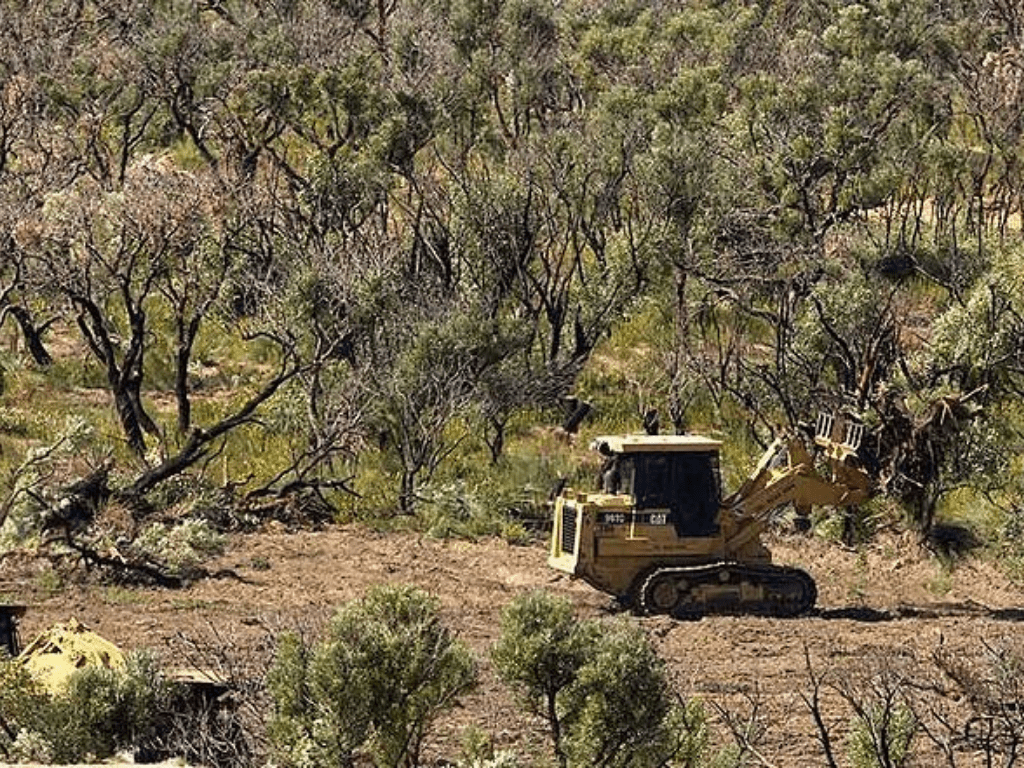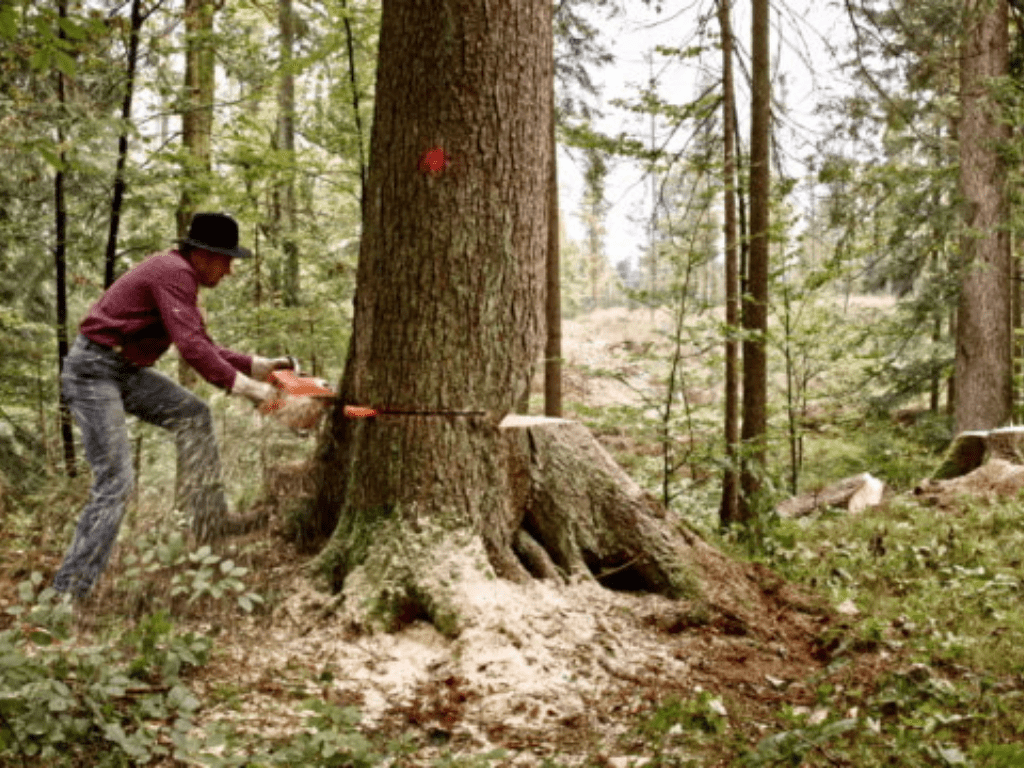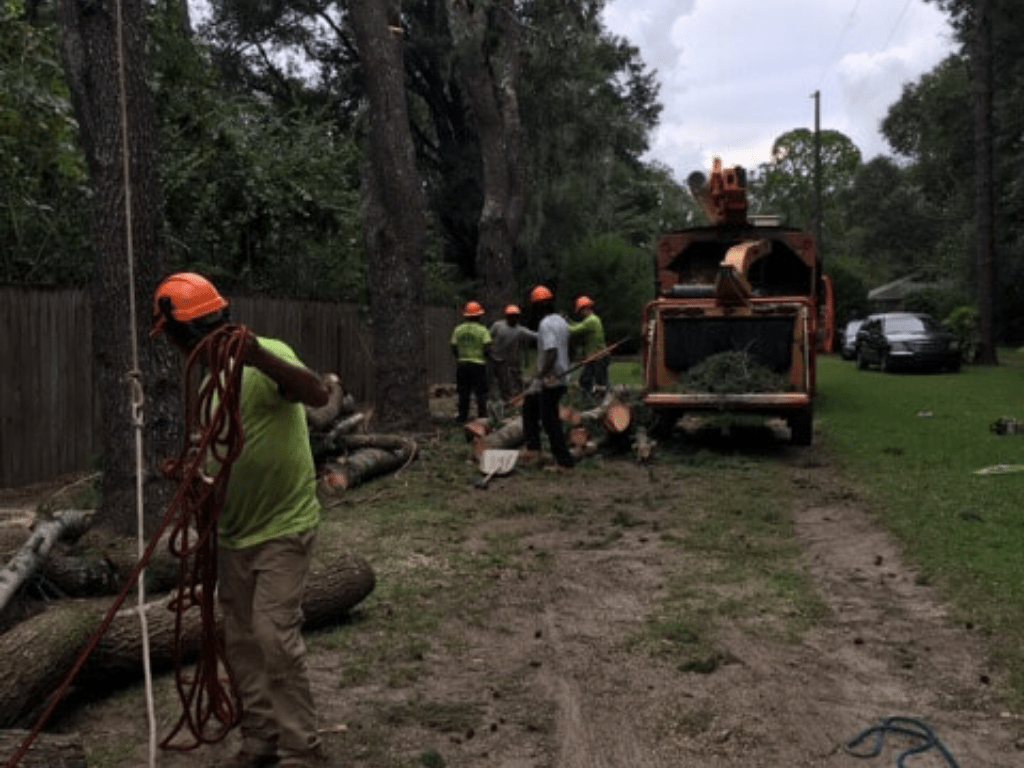Important Guideline, Costs, and Options of Clearing Land

If you are a property owner and decide to cut down trees and clear land to build a home, you need to know that it is a necessary yet labor-intensive process. Below Mr land highlight some important points on what to expect when clearing land and how to correctly clear land.
Clearing Costs
Solo clearing is the most cost-effective way when the property owner wants to clear only a few acres. Land sparsely populated with trees or other standing features such as rocks might also find this approach effective.
Usually, a landowner could buy a chainsaw cheaply at a hardware store. Also, you can rent pro-grade earthmoving equipment like backhoes, skid steers, and trenchers. The cost of acquiring such tools will change depending on location and equipment availability, however, it could mean refraining from more expensive contractors.
The Cost of Labor
A landowner in a healthy, agile condition can clear land by themselves with the appropriate instruments. The landowner needs careful rest after the workday and steady progress, to clear any amount of land.
While finding a worker might be easy, however, the knowledge of proper tree felling techniques and the terrain to clear land is necessary to consider. Working on an incline, near a river bed, or on loose soil could cause additional difficulties that a non-expert worker might not be ready to deal with.
Furthermore, clearing land by hand will take much longer than professionals could do with more specific equipment. While cheap, solo land clearing should not be done if property owners have a deadline by which they need to use the cleared land.
 Advantages and disadvantages of Clearing Land Solo
Advantages and disadvantages of Clearing Land Solo
Pro
- It is Cheaper.
- Landowners can better control how to do that and what features they want to be retained.
- Accessible to anyone with the right instruments (chainsaws, axes, loppers).
Cons
- Need more energy, and it is possible to lead to injuries.
- More time to clear the land and deadline is not important for landowners
- Permission to clear land is necessary and might be difficult depending on the property owner’s location.
- It is risky to do on rocky or difficult terrain.
Usually, DIY land clearing would be the cheapest option for most landowners. However, if age, disability, or other circumstances stop landowners from clearing their land, they’ll have to enlist the services of professionals.
Hiring Contractors to Clear Land
There are different contractors, but all of them have the knowledge, tools, and efficiency to clear land rapidly and based on local rules. But, hired contractor labor will cost more than a landowner clearing their land solo, and so some landowners may not be able to pay for contractors. Still, contractors could clear land by a designated deadline and keep any features the landowners prefer, such as certain trees or rocks. Typically, land clearing should take around $1,000 to $4,000.
Benefits and drawbacks of Hiring Contractors
Benefits
- Because contractors have more experience and know local regulations they clear land appropriately, and therefore, they are the best practices for the task.
- They have access to more powerful instruments than the average person could buy or rent.
- Can handle clearing property on unfavorable terrain.
- They have to clear land by a designated deadline, and therefore, they clear land quickly
Drawbacks
- It is Expensive.
- Sometimes Contractors might accidentally clear features while the landowners like to keep them.
General Process to Clearing Land
The conditions surrounding the landowner’s terrain and location might alter this process, however, overall, these are the general regulations both solo land clearers and contractors utilize to clear land.
Check with the Local Government
In some states, you require permission to cut down trees. Therefore, before picking up any tools, landowners have first to check out if they need them or not. For instance, Atlanta is searching to reduce further deforestation of its landscape. So, anyone in this state who decides to cut down a hardwood tree species that is a foot or more in diameter needs to get permission. Also, more than tree felling regulations, there are other ordinances such as soil quality and erosion. Many states don’t need permits, however, overconfidence is no defense if a landowner cuts clearing land against local rules. landowners must call their local city hall to find out what the rules are for clearing land completely.
Once the landowner has obtained their permit then they need to decide whether they prefer to clear the land by themselves, with a team, or by hiring a professional company to do the task. There are pros and cons to each approach, based on the landowner’s conditions, which will be outlined briefly below.
Set Limitations
Landowners should determine what their budget is and how long they desire to clear land. Setting such restrictions ensures they keep progress within their means. Also do not overspend on land clearing and complete this project quickly.
Setting restrictions is crucial for hired contractors especially, as landowners and contractors can negotiate a price point with which the contractor works. The contractor will also require to know when the landowners need a final deadline for the land clearing, therefore the contractor plans how to arrange daily, weekly, and monthly clearing goals. Unrestricted communication between the landowner and the contractor ensures both parties are aware of any problems in the process and that both are getting what they desire from the land clearing.
Identify What Must Remain Unchanged
landowners who want to keep particular trees must do so before the land clearing process starts, especially if hiring contracted services. Identifying what features must stay untouched with brightly colored rope to make sure nothing is accidentally cut down.
Get Rid of Standing Features
Standing features such as pieces of brick walls, rocks, trash, abandoned cars, and other objects could obstruct the vegetation clearing process. Abandoned cars could be moved to junkyards. Trash should be picked up and suitably disposed of, and large rocks should be dragged away with a backhoe.
Remove Vegetation
After removing human-made structures from the land, then, it is time to clear trees and other plant material. Using axes or chainsaws to cut trees, and using a backhoe to pull their stumps. Using loppers or chainsaws depending on the size of the shrub and saplings to remove them. Herbaceous plants can be cut by hand, mowed down, or removed utilizing a weed whacker. As with old wooden structures, plants can be composted, sold for scrap wood, or recycled.
 Smooth the Land
Smooth the Land
Boulders and stumps can leave holes in the ground, which could obstruct the construction process. Uneven land encumbers the movement of machinery or foot traffic and would make for unstable foundations if the property owner wishes to construct a building or use the land to farm. Fill in any holes in the land with dirt, gravel, or sand. Both landowners and contractors should know that they don’t have permission to carry any soil out of the land clearing site because it is against local environmental laws.
Use the Land
After smoothing land, it will be ready to utilize for whatever the landowner desires. You can pave any dirt patches with grass seeds. Farmers or gardeners should aerate the soil before they are used for plant cultivation.
Additional Tips for Clearing Land
- landowners need to investigate the types of contractors in their area entirely. If contractors understand the type of terrain, budget, and time limits they can estimate the cost of their services. Therefore, knowing the cost of each contractor lets landowners choose services that work best for them, so they shouldn’t pick contractors casually.
- If the weather is rainy, landowners should set up tents or silt fencing to protect equipment.
- Land clearing can result in soil erosion, therefore make sure there are places to collect rainwater. Don’t leave loose soil exposed. It is better, for landowners to replant vegetation or trees to anchor in the soil.
Conclusion
Clearing land is a suitable approach for landowners to get the most out of their land. So landowners can use their own or hired labor, to clear land, however, observe safety in both processes.
If you are searching to purchase affordable land, please contact us. Please visit our property list by Click Here
Please leave us a review on our Facebook page and hit the like bottom to receive new content and deals on Facebook.


You made a good point that it’s important to first talk to the local government when planning to have a land clearing project. I have a friend who recently acquired a piece of land in the rural parts of the state. Maybe he will have to clear the land first before planning any sort of construction over there.
fantastic publish, very informative. I ponder why
the opposite specialists of this sector do not notice this.
You must proceed your writing. I’m confident, you have a huge readers’ base already!